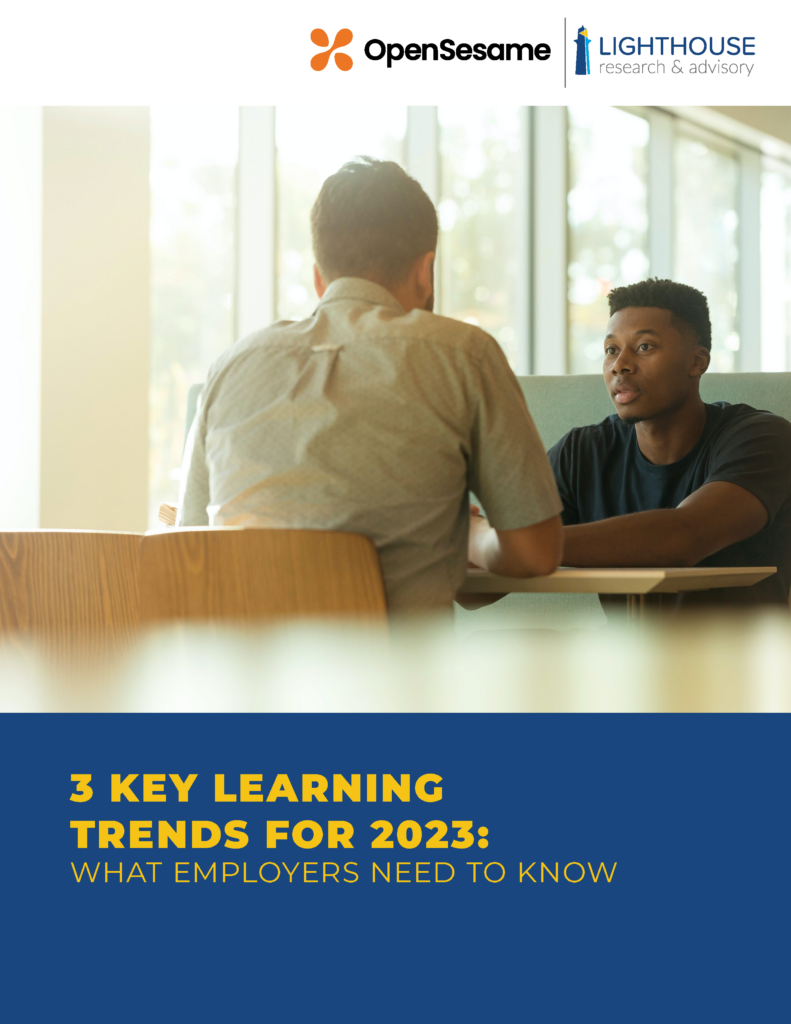3 Learning Trends for 2023: Talent Shortage, Manager Enablement, and Mental Health [New Report]
 At the Learning Technologies UK event last week, I found in many conversations with learning professionals that they can get bogged down and frustrated by the continuous treadmill.
At the Learning Technologies UK event last week, I found in many conversations with learning professionals that they can get bogged down and frustrated by the continuous treadmill.
Identify a need, build/acquire training, develop skills, measure outcomes, and repeat.
That’s a simplified version of what our friends in talent development do every day.
It’s not glamorous. It’s inherently difficult. But it’s also necessary and important work.
However, our research shows that increasingly, other factors (both external and internal) are impacting learning and how it gets done. For instance, it’s not enough to develop the skills of the workforce if we’re not touching the mental health aspects of how they operate. Alternatively, we can’t keep treating talent like it’s 2008: the lack of qualified talent is causing employers to hire individuals with known skill gaps, and that’s going to create a heavier drag on L&D resources down the line.
In the report we developed with OpenSesame, we highlight three trends that every learning and HR leader need to understand if they want to be successful in the coming year.
- The shortage of talent that employers have faced over the last 12-18 months isn’t fully abating yet, which means we need something to attract and retain the very best talent if we want to remain competitive in the current environment. Employee development and growth is the answer to that.
- Managers represent the single largest factor in an employee’s satisfaction at work, but they don’t always have the support they need to be successful. We’ll examine the specific things managers ask for as well as how they say they can be more effective.
- DEI, mental health, and employee belonging may seem like an outlier in a conversation about employee development, but as you will see, there are increasingly clear signals that they are deeply linked, and supporting one area can lead to changes in another.
Want to know more? Dive in: Report – 3 Learning Trends for 2023

Ben Eubanks is the Chief Research Officer at Lighthouse Research & Advisory. He is an author, speaker, and researcher with a passion for telling stories and making complex topics easy to understand.
His latest book Talent Scarcity answers the question every business leader has asked in recent years: “Where are all the people, and how do we get them back to work?” It shares practical and strategic recruiting and retention ideas and case studies for every employer.
His first book, Artificial Intelligence for HR, is the world’s most-cited resource on AI applications for hiring, development, and employee experience.
Ben has more than 10 years of experience both as an HR/recruiting executive as well as a researcher on workplace topics. His work is practical, relevant, and valued by practitioners from F100 firms to SMB organizations across the globe.
He has spoken to tens of thousands of HR professionals across the globe and enjoys sharing about technology, talent practices, and more. His speaking credits include the SHRM Annual Conference, Seminarium International, PeopleMatters Dubai and India, and over 100 other notable events.
